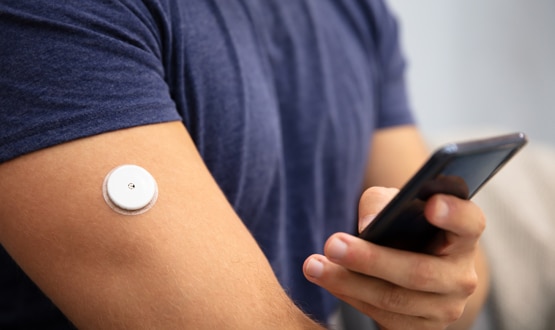Salford Royal will upload wearables data to personalise treatment

One of England’s most digitally advanced trusts will start uploading patient generated wearable data to its electronic patient record.
The Salford Royal NHS Foundation Trust has signed a contract with Validic, a US data platform supplier, to help plug into wearables used by patients, such as fitness and sleep data.
In a statement, the company said Salford Royal would start with a pilot on just these two data points, integrating the information into its Allscripts electronic patient record.
If successful, the system could be expanded to include a wide range of clinical, biometric, lab, and lifestyle data generated by patients.
As well as providing more information for direct care, the information could also be aggregated into databases to be used by researchers at a population health level.
Speaking to Digital Health News, Salford’s chief information officer Rachel Dunscombe said the platform and wearables data would be used to build new, more personalised, care pathways across health and social care.
For instance, a clinician could use a patient’s sleep, heart rate, and exercise data to assess their metabolism and modify their medication accordingly.
“We can starting correlating that data with efficacy of medication, who is suitable for certain types of drugs,” She said.
“It’s going to allow us to have a huge level of granularity we’ve never before. It’s moving towards precision and personalised medicine.”
Validic chief executive Drew Schiller said: “Salford Royal is making personal health data actionable and valuable to both providers and patients by enabling access to the needed insights and context.”
Access to patient generated data has been a source of both excitement and caution in the NHS.
Greater access to detailed information about how people exercise and sleep could, in theory, provide a strong basis for personalised treatment and self-managed care.
The Government’s Personalised Health and Care 2020 plan promotes this vision and says that, by 2018, all patients should be able to add information to their health records, including wearable data.
However, there have also been warnings about the sheer volume of wearables data generated, a tsunami that could overwhelm an NHS that often struggles to process the mountain of patient data it already generates.
Dunscombe said trust needed to be selective with patient generated data, use it only for clearly defined uses, such as treating patient with rare diseases.
“We are not giving everyone one of these [wearables].”
Salford Royal is one of 12 global digital exemplar trusts picked by the Government in September last year.
These exemplars are expected to work with a global technology partner and develop “blueprints” for digital transformation, which can then be used as guides for other, less digitally advanced, trusts.
Each trust will, in theory, receive up to £10 million in central funding, although there are growing concerns this funding will not eventuate.
Salford runs on Allscripts’ Sunrise Clinical Manager EPR, which it deployed in 2013.
In 2014, the trust said it wanted to use the EPR to create a fully integrated health and care record across the city of Salford.
Dunscombe said an important part of its digital exemplar strategy was building 20 new acute pathways, enabled by technology such as Validic, across health and social care.
“There pathways we build won’t have the same traditional or geographic boundaries.”
The trust hopes to have the wearable data platform deployed and generating meaningful results as part of exemplar programme within two years.






2 Comments
i agree that it is inevitable we will begin to see mass integration of data from wearables. one thing that always comes up though is the need to be able to separate clinically verified or clinician entered data in an EHR from patient entered data (via telehealth devices for exampe) or integrated from a wearable device such as a fitbit or apple watch which are essentially consumer electronics products. it would be interesting to know if the allscripts EHR will highlight all data coming from wearables, or hold it in a separate area of the record?
It is great to see this being explored as it marks the start of something with very exciting potential.
Whilst there is an inevitable “data tsunami” on the horizon for the likes of PHE and the NHS this shouldn’t be an issue but, the current thinking needs to change.
With the incoming GDPR organisations (in particular the NHS) are going to have their work cut out with their current systems/data nevermind consumer-generated data. Furthermore with hacking and data leaks on the rise individuals are likely to become much more privacy aware and want to share much less.
Not to mention that connected devices / IoT is perhaps one of the fastest moving industries in terms of technology and growth. With the NHS still using fax machines instead of email, we need to be careful about investing in a particular technology.
The key as always is open interoperability but in particular, patient-facing APIs. Secondly, the patient can own and control all their data. Most the time the NHS (or any other organisation) does not need ALL of my data, it just needs the significant outputs and events.
Many of the big AI players are miniaturising their technology to push processing closer to the user to address these problems and concerns. The NHS too should be looking at how it operates in this new connected world.
Comments are closed.